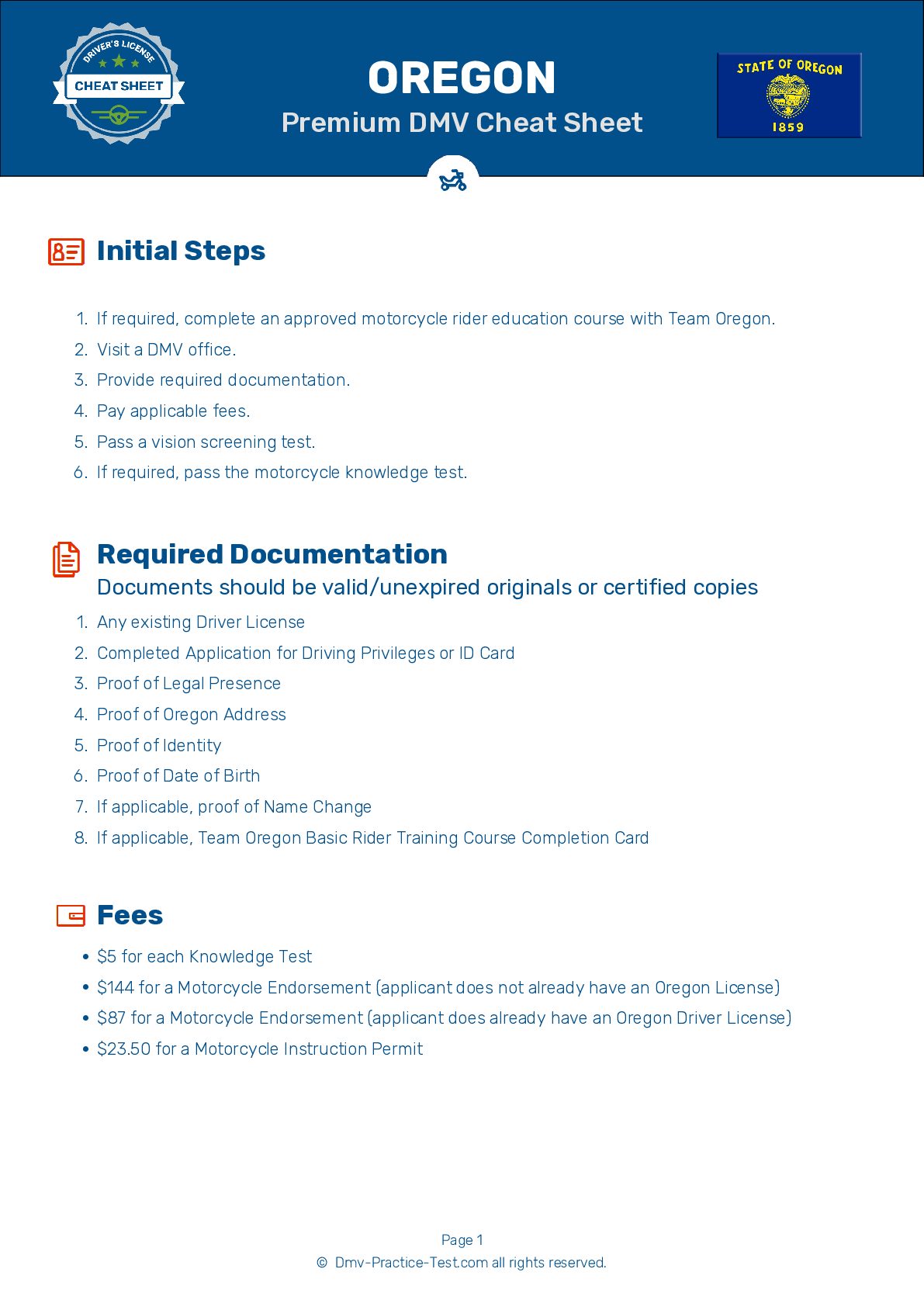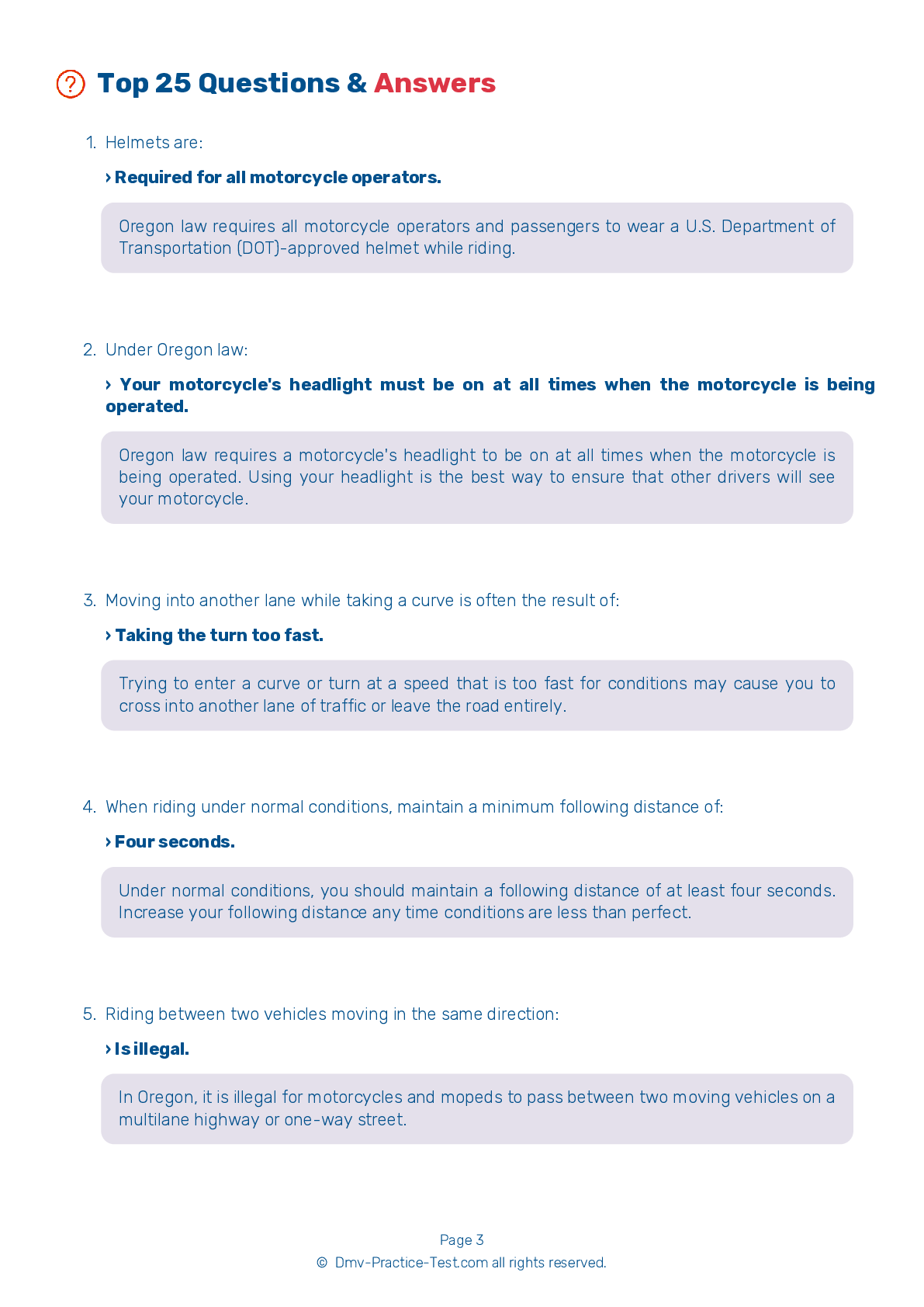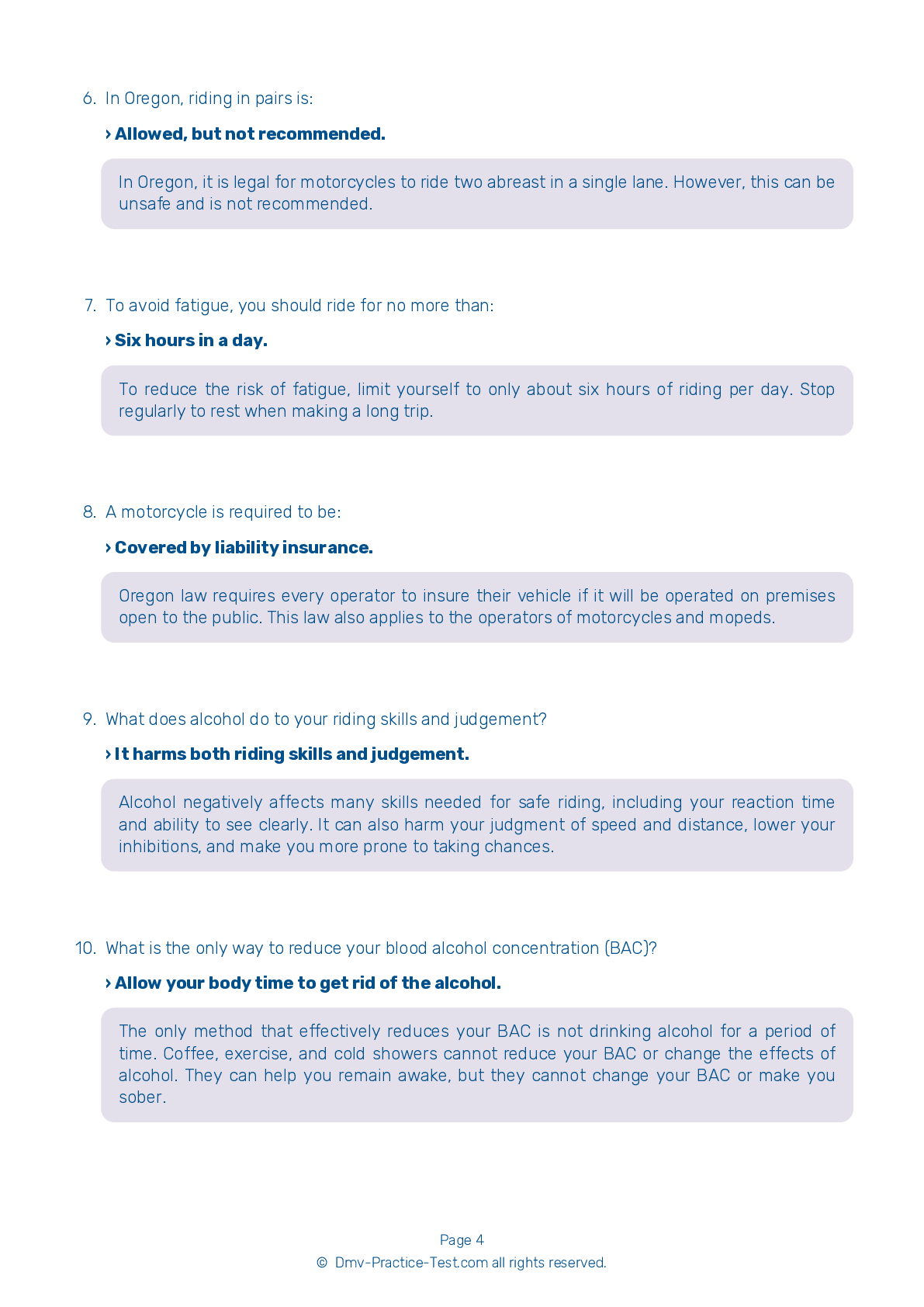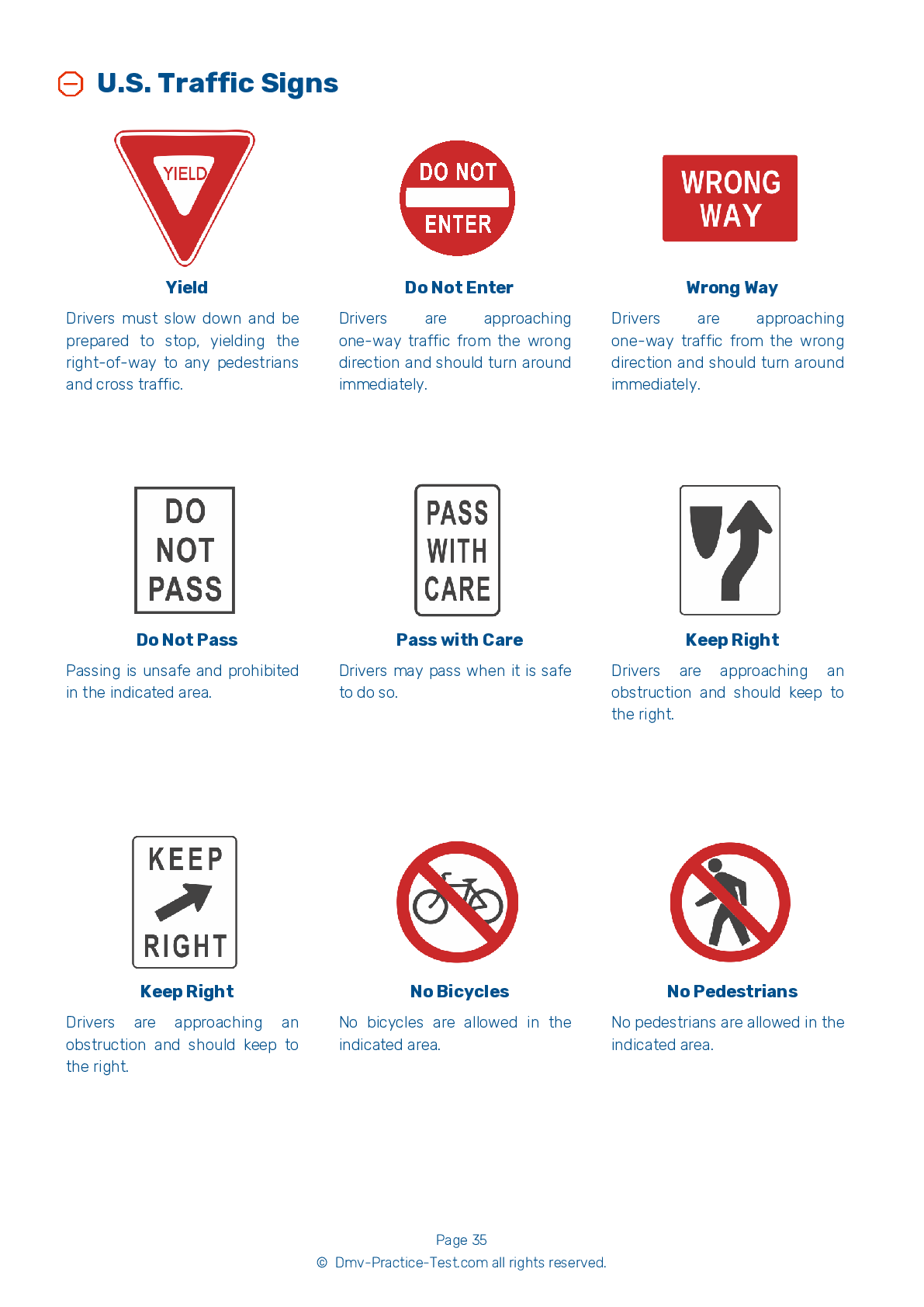Motorcycle Test | License OR 2025 | FREE Online Practice! #14 Page 4 of 4
Take this FREE motorcycle test (license in OR 2025) to check your knowledge of the road rules. To improve your results, download a motorcycle handbook online, study theory, and practice for free on our website. Still worried about how to get a motorcycle license in Oregon in 2025? Check our website for more sample tests, train as much as possible, and boost your grades!
19 . A plastic, shatter-resistant face shield:
A plastic, shatter-resistant face shield can help protect your whole face if you are involved in a crash. Goggles protect your eyes, but not the rest of your face. A windshield is not an adequate substitute for googles or a face shield.
20 . To avoid fatigue, you should ride for no more than:
To reduce the risk of fatigue, limit yourself to only about six hours of riding per day. Stop regularly to rest when making a long trip.
21 . If you are unable to avoid hitting an object in the roadway, you should:
If you cannot avoid hitting an obstacle in the roadway, you should try to hit it at as close to a 90-degree angle as possible. Slow down as much as you can before contact, keep your motorcycle upright, rise slightly off of your seat, and roll the throttle slightly to lighten the front end just before impact.
22 . Generally, the body eliminates one alcoholic drink per hour. If a person consumed eight alcoholic drinks four hours ago, how many drinks likely remain in their body?
The minimum number of drinks left in a person's system can be estimated by subtracting the number of hours since the last drink from the total number of drinks consumed. In this case, the alcohol content of about four drinks would remain.
23 . A motorcycle operator can slow down by:
Motorcyclists often slow down by simply downshifting. Motorcyclists should be aware that slowing down in this manner does not activate the brake lights.
24 . To cross tracks that run parallel to your lane, you should:
To safely cross trolley tracks, railroad tracks, ruts, or pavement seams running parallel to your lane, move to a lane position that will allow you to cross them at an angle of at least 45 degrees. Then, make a quick, sharp turn. If you try to edge across, the tracks or seam could catch your tires and throw you off balance.
25 . Maximum straight-line braking is done by:
Maximum straight-line braking is accomplished by simultaneously applying both the front and rear brakes without locking either wheel.
See the exact questions that will be on the 2025 Oregon DMV exam.
99.2% of people who use the cheat sheet pass the FIRST TIME
Jeneen was tired of paying $5/gallon. She got herself a scooter that required the motorcycle license. She studyed the motorcycle test cheat sheet and passed her test the next day!
Christopher tells us how he knew nothing prior to obtaining the motorcycle study guide, and he only got one question wrong because he clicked on the wrong answer by mistake.



